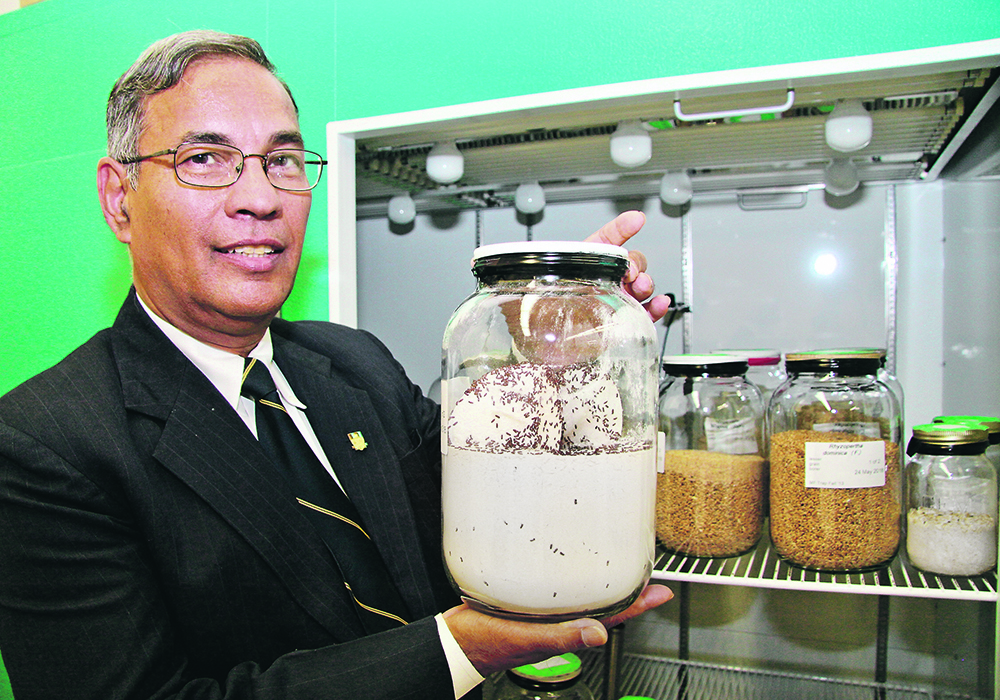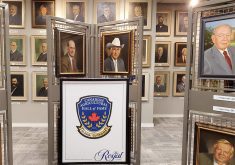Digvir Jayas inducted into the Canadian Agricultural Hall of Fame and presented with gold medal from Engineers Canada
The first three weeks of summer have been a memorable period in the life of Digvir Jayas, an agricultural engineering professor at the University of Manitoba.
In a short span of time, Jayas received two national awards for his research and innovation on grain storage.
In late June, Engineers Canada presented Jayas with a gold medal for his “work to find better ways to dry and store grain.”
Then, in early July, the Canadian Agricultural Hall of Fame announced that Jayas will be one of four inductees in 2022.
Read Also

Farming Smarter receives financial boost from Alberta government for potato research
Farming Smarter near Lethbridge got a boost to its research equipment, thanks to the Alberta government’s increase in funding for research associations.
“His innovative research and collaborative focus have significantly increased the availability of high-quality grains to feed Canadians and export around the world,” the Ag Hall of Fame said in a statement.
The other inductees in the 2022 class for the Agricultural Hall of Fame are Maurice Delage, who helped develop the hybrid canola industry, Mabel Hamilton, a beef industry leader and ag education champion, and Ashok Sarkar, an expert flour miller and promoter of Canadian grains.
The two awards signify that Jayas has come a long way from his beginnings — growing up on his grandparents’ farm in India.
“Both (awards), to me, were the highest honours,” Jayas said from his office at the U of M, where he is vice-president of the university, focusing on research.
During his academic career, Jayas has collaborated with scientists around the globe to author more than 900 papers on the storing, drying and monitoring of grain.
He has worked on dozens of projects, but one achievement stands above the rest.
“The development of the horizontal, air flow dryer…. I conceptualized it almost 30 years ago. At that time, it was just a concept, based on the lab data.”
Jayas learned the air flow resistance is significantly lower when air is forced through a grain bin in a horizontal direction, instead of vertically.
He didn’t patent the system, however, because he wanted grain storage companies to adopt the technology.
“I continued pushing for it. It wasn’t picked up by the industry right away,” he said.
“It did get picked up in other countries. Somebody in the Ukraine has picked it up and built the system…. In China, they (adopted) it quite significantly.”
Several years ago, he was in China and learned that two million tonnes of grains were dried in the country using horizontal air flow dryers.
Jayas has worked with Ag Growth International to build a prototype of the grain drying system.
“It showed what I (said) a long time ago, how uniformly it would dry the grain and take less energy.”
The horizontal air flow dryer is a tangible accomplishment but Jayas has also trained a small army of grain storage experts.
Many of his former PhD students are now employed around the globe, helping to improve grain storage in other countries.
“I’m very proud and very fortunate that I’ve had a good team of students and post-doctoral fellows, who have chosen to come and work with me,” Jayas said.
While his research has made a difference, the world still has a massive problem with food waste.
Jayas estimated that 20 percent of cereal, oilseed and pulse crops do not make it to market.
Losses are small in countries with modern grain storage, maybe one percent or two.
In other parts of the world, in certain regions within a developing country, losses could be as high as 50 percent.
“If you have a silo and you develop a hot spot and spoil the whole silo, you have 100 percent losses,” Jayas said.
That’s frustrating because grain storage is a solvable problem.
The technology exists to preserve grain, but policy makers need to think differently about cereals, pulses and oilseeds, Jayas explained.
“When the grains are sitting with the farmer, they belong to the farmer…. But the individual farmer doesn’t have the (money) to build a better system, in many parts of the world,” he said.
Instead of a farmer asset, governments should view on-farm grain as a national asset, something worth preserving.
If that grain spoils and doesn’t go to market, the country may have to import grain to replace it.
“So, they’re spending more money on importing, rather than building a better (storage) system,” Jayas said.
Another challenge is extension and outreach.
Scientists and engineers have technical knowledge about the storage, drying and monitoring of grain. But that knowledge doesn’t always get to farmers, Jayas said.
“In my view, I don’t think it (outreach) is happening enough in an organized fashion.”


















